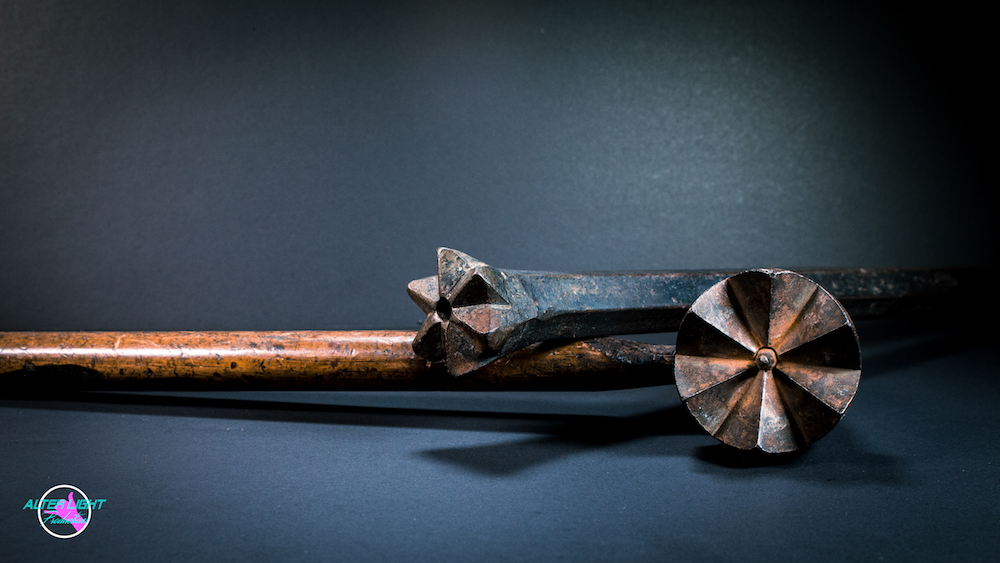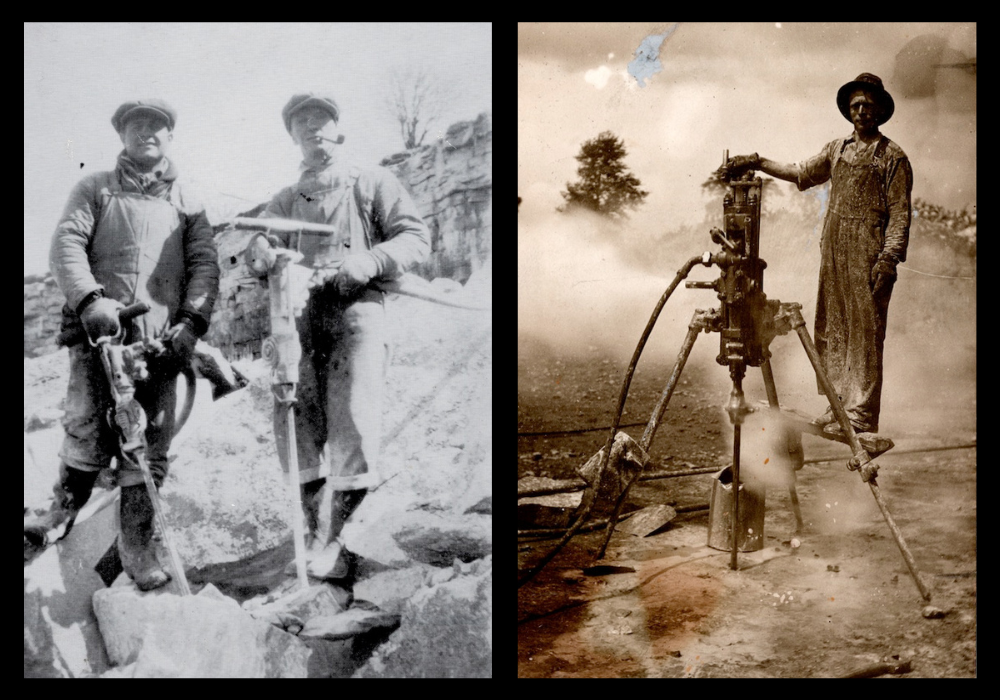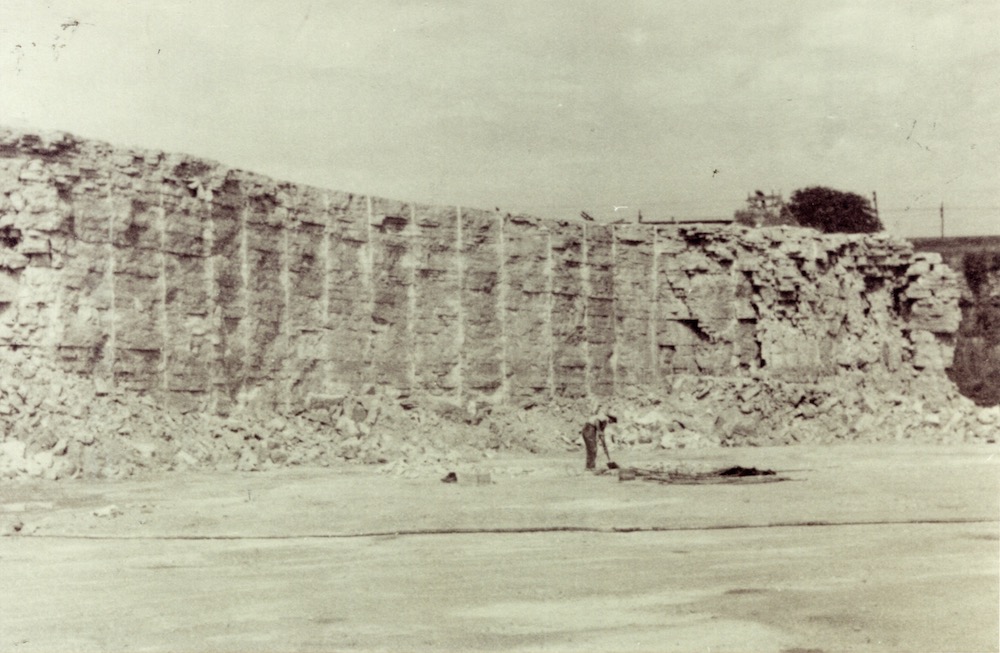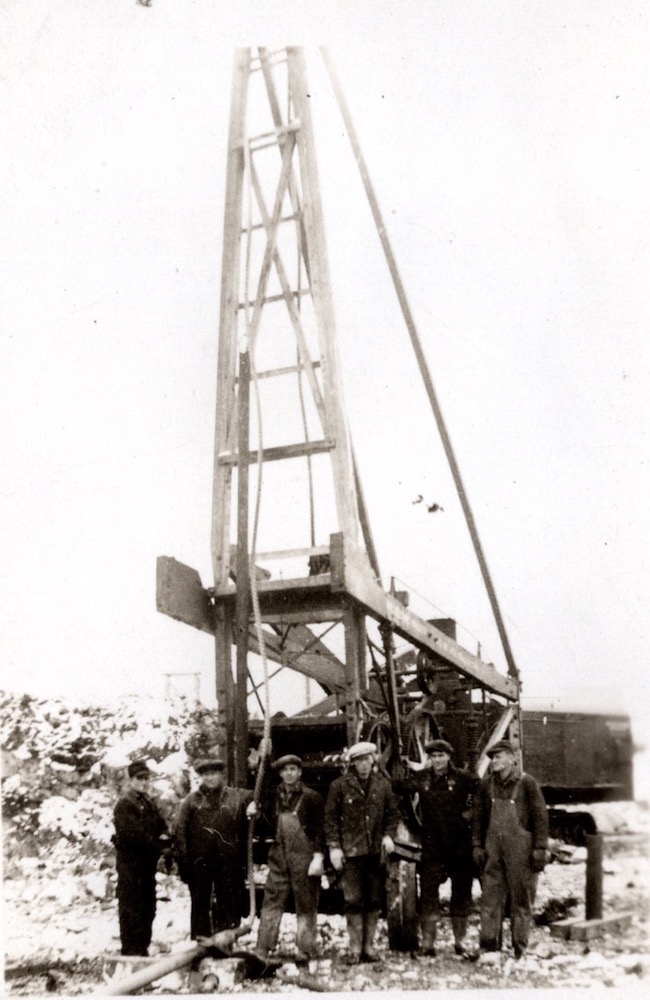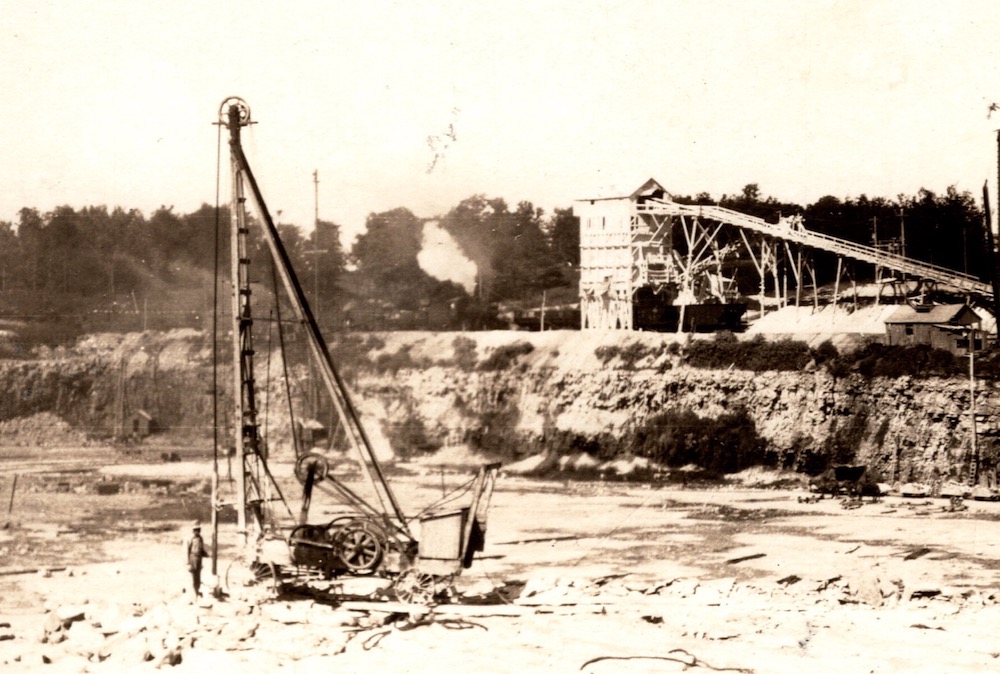From Hand Drills to Drilling Rigs
Drilling was an essential step in stone extraction. To blast stone off the pit walls, workers had to drill boreholes into the bedrock and fill the holes with explosives. These blasts would drop whole sheets of stone to the pit’s floor and shatter the rock into pieces.
Early drilling at the Downing-Bremner quarries had been done by hand. One worker would sit on a keg and hold the drill while a partner struck it with a sledgehammer. After each strike of the hammer, the drill would be turned. With this method, drilling a 3-foot hole took an hour and a half.
Steam drills were introduced in the second half of the 19th century and saved quarry employees the back-breaking work of earlier days. These drills supported steam cylinders on a tripod. Steam was sent to the cylinders through a hose, and the drills delivered blows to the rock in quick succession. Steam drills required only one operator and could drill 2 feet in 2 minutes. The downfall of these drills was that they could not reach deeper than 12 feet.
At the Beachville White Lime site, cable-tool drilling rigs were used. These rigs were topped by pulley wheels and run by engines that repeatedly lifted and dropped drill bits into holes. Through the middle of the 1900s, electrically driven Cyclone drills and churn drills were commonly used by crews at all of Beachville’s quarries. Electric models easily drilled holes set back from the rock face by 18 feet. The boreholes they created were 6 inches in diameter and reached anywhere between 74 and 80 feet deep in minutes. Such holes would have taken early quarry workers about 27 hours to drill.


